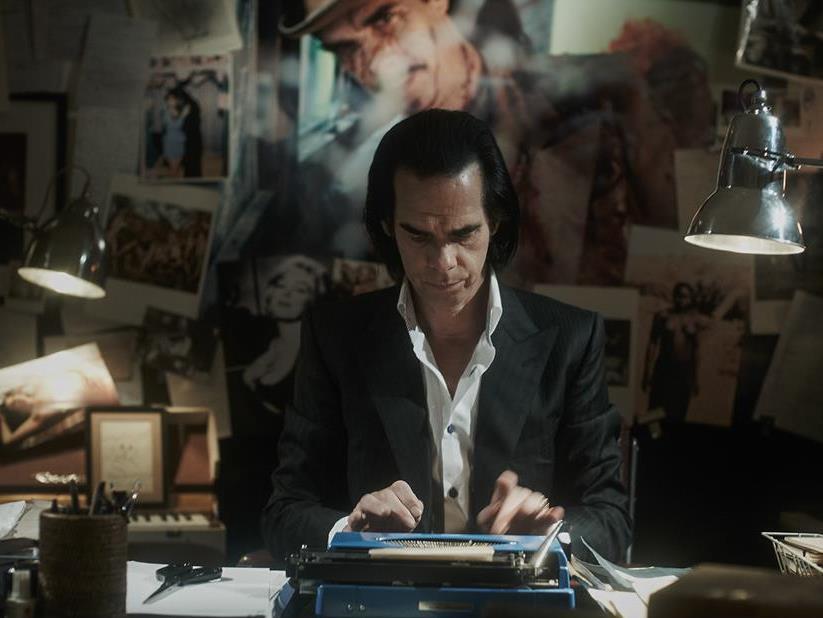If a Nick Cave song became a film, drawing upon the details of his life and turning it into cinematic rather than musical art, the end result would be 20,000 Days on Earth. That’s obviously the intention of Iain Forsyth and Jane Pollard’s documentary; however it is no minor feat that it is also the outcome. Translating his lyrical poetry to the screen has been done before, namely in the three movies – Ghosts… of the Civil Dead, The Proposition and Lawless – that he has penned, but never has the job been achieved with the artist himself as the star and subject.
After starting with a striking montage that splices together news and concert footage illustrative of Cave’s existence to date, the film announces its reason for being in a melodic mission statement straight from Cave’s very lips. Having reached his mid-fifties, his days are typically routine, involving writing, eating, more writing, and watching television with his children. The feature shows exactly this, in essence and in actuality. The feature also turns the course of an ordinary day into something extraordinary in its reflection and contemplation.
In chronicling the events of Cave’s 20,000th incidence of seeing the rising and setting of the sun, the duo of writer/directors and their co-scribe and on-screen presence take liberties with the facts behind the concept. Mimicking the spirit of the opening sequence on a larger, longer scale, this is a staged and idealised representation of an occurrence made remarkable only by its recognition. As much a dramatization as a documentary, it pieces together a vision of perfection for the musician, an idyll of everything he has seen and done. More important than accurately showing the minutiae of the specific day is the funnelling of past successes and future paths into a loving likeness of his life and loves as a 24-hour miniature.
To do so, Forsyth and Pollard get as up close and personal as they can with Cave; they sit in his therapist’s office as he relates his first encounter with the female form, they crouch on the floor as he lays down the skeleton of a new song, they drive around as he has conversations with influential collaborators from throughout his career, and they share the enthusiasm of archivists as he trawls through his childhood memories. Their approach paints a poignant portrait of his creative process, and it shows him – and, by extension, everyone – as the sum of his parts, just as the milestone of the movie’s moniker was only made possible by living through the preceding experiences.
Far from an unexpected element of the feature, Cave is understandably instrumental to the earnest and affecting end result, in all his charming and intelligent glory. His willingness to probe his own output, impact and image is as influential within the film as it is in its very existence. The talent on display in the many musical moments is commanding, yet just as captivating is the way the songs are used to emphasize the point, rather than being the point. For Cave fans, it affords another way of appreciating his capabilities; for those less enamoured with his music, it is always accessible and never indulgent in shedding light on the toil behind the tunes.
20,000 Days on Earth won prizes for directing and editing at the 2014 Sundance Film Festival, accolades well deserved given that its technical achievements match its thematic resonance. Comprised of a structure that may appear piecemeal, the full picture that emerges is intricately woven from shots that seemingly linger on ephemera yet smartly layer aesthetics and information. The editing, however, is something else entirely, at all times rhythmic, balletic and coming to a crescendo in the final concert mash-up. Indeed, as it all assembles into an eccentric and earnest package, there are many reasons to remember Nick Cave and his 20,000 Days on Earth: the eclectic aura, the artistry, and most of all, the ingenuity.
Rating: 4 out of 5 stars
20,000 Days on Earth
Director: Iain Forsyth and Jane Pollard
UK, 2014, 97 mins
Sydney Film Festival
www.sff.org.au/
4 – 15 June
In general release: August 21
Distributor: Madman
Classification: TBC
Actors:
Director:
Format:
Country:
Release:





